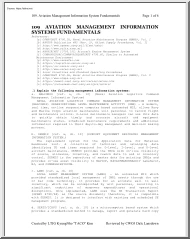No comments yet. You can be the first!
What did others read after this?
Content extract
Right-angle triangles Definitions: In a right-angled triangle the ratio of the sides is equal to the ratio of the sin of the opposite angles. a:b:c=sinα:sinβ:sinγ While γ=90° , sinγ=1 , so a:b:c=sinα:sinβ:1 Construct right triangles with one angle α. These triangles are similar, because they have two congruent angles. Therefore, the ratios of the corresponding sides are equal, and these ratios only depend on the value of α. These ratios are called trigonometric ratios, and they have the following definitions: sinα= a/b or length of opposite leg/length of hypotenuse cosα= b/c or length of adjacent leg/length of hypotenuse tanα= a/b or length of adjacent leg/length of opposite leg cotα= b/c or length of opposite leg/length of adjacent leg Theorems The mostly used theorem is the Pithagorean Theorem The sum of the squares drawn on the legs of a right angle triangle is equal to the square drawn on the hypotenuse. In algebra: a2+b2=c2 where a and b are the legs of
the right angle triangle, and c is the hypotenuse. So the Pithagorean Theorem says that in a right angle triangle the sum of the squares of the legs is equal to the square of the hypotenuse. Statement: For proving the Pithagorean Theorem it is enough to prove the Cosine Theorem In any triangle we can get the square of one side, if we subtract two times the other two sides plus the cosine of their enclosed angle from the sum of the two sides square. c2=a2+b2-2abcosγ while we examine right angle triangle, γ=90°, so cosγ=0, so c2=a2+b2 Proof: Let the triangle look like on the picture. We get 3 vectors, thus the following statement is true: c=a–b The square of the equation is also true: c2 = (a – b)2 c2 = a2 – 2ab + b2 Because of the definition of the scalar product : a2 = a a cos0° = a 2 1 = a 2 = a2 similarly: b2 = b2 and c2 = c2 a b = a b cosγ = a b cosγ Substituting into the equation above: c2 = a2 + b2 – 2ab cosγ We used that
a is not equal to 0, b is not equal to 0 and c is not equal to 0, which are true, because they are the sides of the triangle. q.ed Converse of the Pithagorean theorem If the sum of the squares of the length of two sides of a triangle is equal to the square of the length of the third side, then the triangle is a right triangle. Proof -Construct a triangle ABC with sides a, b, and c. -The equation a2+b2=c2 is given. -Construct a right triangle A’B’C’ with legs a and b. -Its hypotenyuse is c’. -Applying the Pythagorean theorem we obtain a2+ b2= (c’)2. From the two equations it follows that c2=(c’)2. Since c>0 and c’>0, we can conclude that c=c’. Thus the two triangles are congruent, and triangle ABC is a right triangle, as well q.ed Thales theorem The two endpoints of a diameter of a circle and az arbitrary point on the circle (not on the diameter) can be connected to form a right-triangle. The diameter is the triangle’s hypotenuse Proof: -Construct a circle
with centre O. -Find the diameter and call it AB. -Choose an arbitrary point on the circle (not on the diameter). Call this point C -Draw OC radius. Triangle AOC and triangle BOC are isosceles, thus the angles on their bases are equal α and β. α + β + (+β)=180o 2α + 2β = 180o 2(α + β)=180 α + β =90o So the triangle is right angled. q.ed Converse of the Thales theorem The circumcentre of a right triangle is the midpoint of the hypotenuse. Proof: -Construct a right triangle ABC. -We have to prove that midpoint F is equidistance from all vertices: - Reflect the triangle around midpoint F to get a parallelogram AC’BC. AC’BC is a rectangle because it has a right angle. Applying theorem that the diagonals of the rectangle bisect each other and have equal length AF=FB=FC So we get that midpoint F is equidistant from A and B and C. q.ed Theorem of altitude: The altitude of the hypotenuse is the geometrical mean of the two parts of the hypotenuse divided by the
altitude. m=√pq Proof: ABC ~ CTB ~ ATC , because their angles are equal, so m/p = q/m m2 = pq so m = √pq q.ed Theorem of the legs: Any leg of the right angle triangle is the geometrical mean of the hypotenuse and the orthogonal projection of the leg to the hypotenuse. a = √cp b = √cq Proof: ABC ~ CTB ~ ATC , because their angles are equal So a/c = p/a a² = cp , so a = √cp and b/q = c/ b b² = cq , so b = √cq q.ed The theorem of the legs is a possible proof for the Pithagorean Theorem: a² + b² = cp + cq a²+b²=c(p+q) a²+b²=c² Application of right triangles: Area, Volume calculations In Physics: - Mechanics, dividing forces into components - Slope, lever - Pythagorean numbers Constructing tangent (geometry). Trigonometry Calculating distances in geometry
the right angle triangle, and c is the hypotenuse. So the Pithagorean Theorem says that in a right angle triangle the sum of the squares of the legs is equal to the square of the hypotenuse. Statement: For proving the Pithagorean Theorem it is enough to prove the Cosine Theorem In any triangle we can get the square of one side, if we subtract two times the other two sides plus the cosine of their enclosed angle from the sum of the two sides square. c2=a2+b2-2abcosγ while we examine right angle triangle, γ=90°, so cosγ=0, so c2=a2+b2 Proof: Let the triangle look like on the picture. We get 3 vectors, thus the following statement is true: c=a–b The square of the equation is also true: c2 = (a – b)2 c2 = a2 – 2ab + b2 Because of the definition of the scalar product : a2 = a a cos0° = a 2 1 = a 2 = a2 similarly: b2 = b2 and c2 = c2 a b = a b cosγ = a b cosγ Substituting into the equation above: c2 = a2 + b2 – 2ab cosγ We used that
a is not equal to 0, b is not equal to 0 and c is not equal to 0, which are true, because they are the sides of the triangle. q.ed Converse of the Pithagorean theorem If the sum of the squares of the length of two sides of a triangle is equal to the square of the length of the third side, then the triangle is a right triangle. Proof -Construct a triangle ABC with sides a, b, and c. -The equation a2+b2=c2 is given. -Construct a right triangle A’B’C’ with legs a and b. -Its hypotenyuse is c’. -Applying the Pythagorean theorem we obtain a2+ b2= (c’)2. From the two equations it follows that c2=(c’)2. Since c>0 and c’>0, we can conclude that c=c’. Thus the two triangles are congruent, and triangle ABC is a right triangle, as well q.ed Thales theorem The two endpoints of a diameter of a circle and az arbitrary point on the circle (not on the diameter) can be connected to form a right-triangle. The diameter is the triangle’s hypotenuse Proof: -Construct a circle
with centre O. -Find the diameter and call it AB. -Choose an arbitrary point on the circle (not on the diameter). Call this point C -Draw OC radius. Triangle AOC and triangle BOC are isosceles, thus the angles on their bases are equal α and β. α + β + (+β)=180o 2α + 2β = 180o 2(α + β)=180 α + β =90o So the triangle is right angled. q.ed Converse of the Thales theorem The circumcentre of a right triangle is the midpoint of the hypotenuse. Proof: -Construct a right triangle ABC. -We have to prove that midpoint F is equidistance from all vertices: - Reflect the triangle around midpoint F to get a parallelogram AC’BC. AC’BC is a rectangle because it has a right angle. Applying theorem that the diagonals of the rectangle bisect each other and have equal length AF=FB=FC So we get that midpoint F is equidistant from A and B and C. q.ed Theorem of altitude: The altitude of the hypotenuse is the geometrical mean of the two parts of the hypotenuse divided by the
altitude. m=√pq Proof: ABC ~ CTB ~ ATC , because their angles are equal, so m/p = q/m m2 = pq so m = √pq q.ed Theorem of the legs: Any leg of the right angle triangle is the geometrical mean of the hypotenuse and the orthogonal projection of the leg to the hypotenuse. a = √cp b = √cq Proof: ABC ~ CTB ~ ATC , because their angles are equal So a/c = p/a a² = cp , so a = √cp and b/q = c/ b b² = cq , so b = √cq q.ed The theorem of the legs is a possible proof for the Pithagorean Theorem: a² + b² = cp + cq a²+b²=c(p+q) a²+b²=c² Application of right triangles: Area, Volume calculations In Physics: - Mechanics, dividing forces into components - Slope, lever - Pythagorean numbers Constructing tangent (geometry). Trigonometry Calculating distances in geometry




